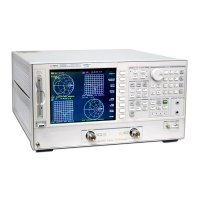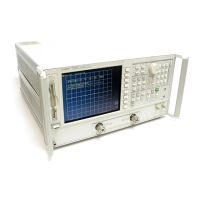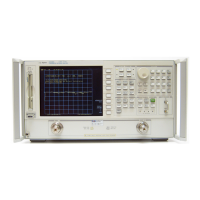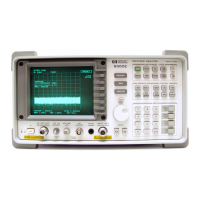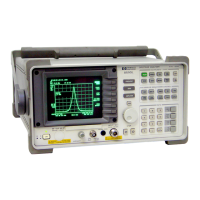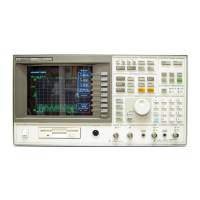5-27
Hardkey/Softkey Reference
Analyzer Functions
prompts the user to select a destination sequence position
(SEQUENCE 1 through 6). When the value of the loop
counter reaches zero,the sequence in the specified position
will run.
prompts the user to select a destination sequence position
(SEQUENCE 1 through 6). When the value of the loop
counter is no longer zero, the sequence in the specified
position will run.
displays only the imaginary (reactive) portion of the
measured data on a Cartesian format. This format is
similar to the real format except that reactance data is
displayed on the trace instead of impedance data.
increments the value of the loop counter by 1.
accesses a menu that allows you to measure the R, A, and
B channels and their ratios.
presents the instrument mode menu. This provides access
to the primary modes of operation (analyzer modes).
sets the LCD intensity as a percent of the brightest
setting. The factory-set default value is stored in
non-volatile memory.
leads to a series of service tests.
selects the analyzer internal disk for the storage device.
selects internal non-volatile memory as the storage
medium for subsequent save and recall activity.
turns interpolated error correction on or off. The
interpolated error correction feature allows the operator to
calibrate the system, then select a subset of the frequency
range or a different number of points. Interpolated error
correction functions in linear frequency, power sweep and
CW time modes. When using the analyzer in linear sweep,
it is recommended that the original calibration be
performed with at least 67 points per 1 GHz of frequency
span.
leads to the isolation menu.
allows the number of isolation averages taken in the ECal
correction to be set manually. Use the number keypad to
set the number of averages. The number of averages can
be set from 1 to 999. The default number of averages is 10.
returns to the two-port cal menu.
measures the isolation of the device connected to the test
port.
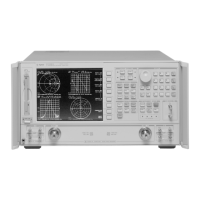
